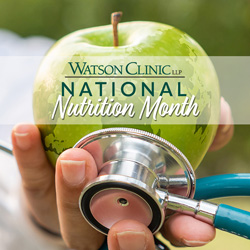 If you're not paying attention to your sodium intake, you're likely getting too much. And your health could pay the price.
If you're not paying attention to your sodium intake, you're likely getting too much. And your health could pay the price.
A whopping 90% of Americans eat too much sodium. Most adults get around 3,400 milligrams (mg) daily. But the recommended upper limit is 2,300 mg.
Sodium helps the body maintain a healthy fluid balance. It's also key for normal nerve and muscle function. But too much causes the body to retain fluids, which can raise blood pressure and damage blood vessels. That can lead to high blood pressure and increase the risk for heart attack and stroke.
Simple steps to slash your sodium intake
Dietary sodium doesn't just come from the saltshaker. In fact, more than 70% of the sodium we eat comes from packaged foods and restaurant meals. Sodium also occurs naturally in some foods, like milk and celery.
When you consider all of these sneaky sources, it's easy to see how sodium can add up. But with a little effort, you can curb your intake without sacrificing flavor:
Read the label. Check the sodium content of packaged foods before buying and seek out lower sodium products.
Know the salty six. Pay particular attention to the American Heart Association's list of the saltiest foods, and find alternatives when possible. These foods include:
1. Breads and rolls. They don't taste salty, but they may have a lot of sodium. And you can easily consume too much sodium if you regularly eat bread and rolls.
2. Pizza with pepperoni. It contains about a third of your daily sodium. Substitute veggies for the meat.
3. Sandwiches or fast-food burgers. You don't have to steer clear completely. Just have half a sandwich with a salad instead.
4. Cold cuts and deli meats. Swap some of the meat for fresh vegetables on a sandwich.
5. Canned soups. Seek out low-sodium options or make your own soup.
6. Taco and burrito fillings and toppings. Opt for veggies and lean proteins.
Cook with less salt. Season foods with spices, garlic, citrus and herbs instead of salt. They bring out flavors without the need for much extra salt.
Drain and rinse canned foods. Canned beans and vegetables tend to be high in sodium. But you can get rid of most of it with a quick rinse. Or look for ones with no added salt.
Take the saltshaker off the table. Break the habit of adding an extra sprinkle right before eating. You might be surprised by how quickly your taste buds adjust!
Your Watson Clinic primary care provider can help you stay ahead of the game in your healthy eating goals. Schedule an appointment with a member of our Family Medicine or Internal Medicine departments by calling 863-680-7190.
Additional source: Centers for Disease Control and Prevention